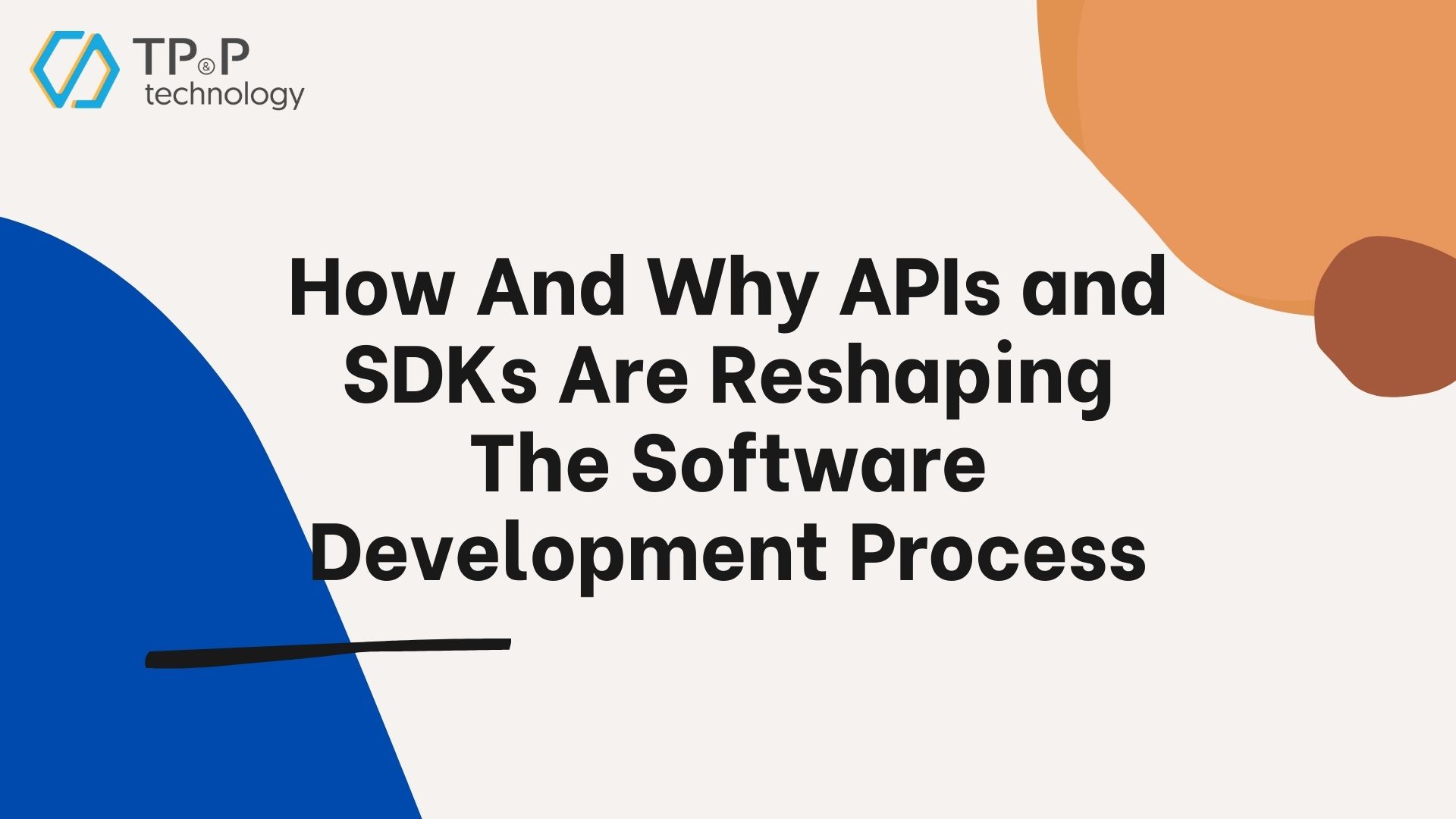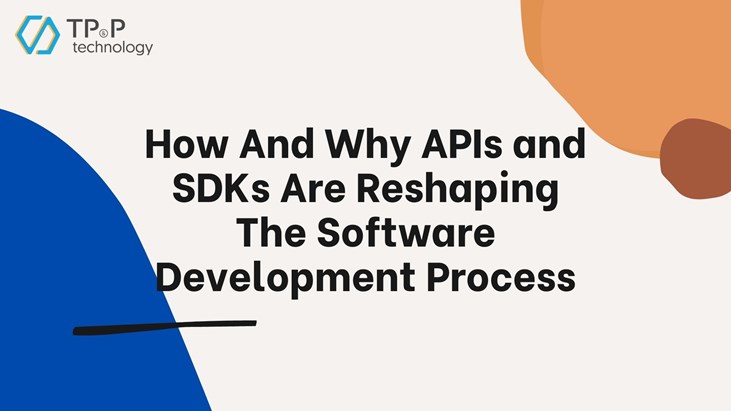
How And Why APIs and SDKs Are Reshaping The Software Development Process
Due to the competitiveness in the global market now, all businesses are striving to step up their game. The software development team are working to integrate the pre-build application programming interfaces (APIs) and software development kits (SDKs) in order to speed up the new feature time-to-market and maximize the product’s performance as well as reliability. With a simple set of commands, APIs allow the application to interact with external services; SDKs are the collection of software development tools in one installable package that is used to build applications for one specific platform. For example, whenever you check the weather on your smartphone, or pay online or send messages using social media, you likely use apps built with APIs and SDKs.
Because these solutions have the backend which is responsible for the heavy lifting, they give developers a proven and modular foundation to build on instead of wasting time and resources to rebuild an already-existed feature. Investors and analysts are calling APIs and SDKs the next 1 trillion dollars software wave due to its associated cost savings, improved efficiency and improved user experience.
In addition to market forecasting, Here are how and why APIs and SDKs are reshaping the software development processes.
How the software development team is using APIs or SDKs
Every application is built for different purposes. But they all have a few core features and functions in common. For instance, telemedicine apps, fintech apps and gaming apps all provide in-app chat so that users can communicate with each other without having to leave the app. Or e-commerce app and live stream apps broadcasting concerts need to be able to handle users’ payment.
Whenever these common components need to be added to a specific app, instead of writing all code for these again, the software development team just needs to assemble the right combination of APIs building blocks and focus on developing other functionalities that differentiate it to its components. The developer team pastes and customizes some code to connect the app to the vendor’s API and run similar features in a fraction of the time it would have taken the team to develop something similar.
Efficiency for developers
From an architectural point of view, this approach gives individual teams of developers the freedom to work independently of each other and each team’s scope of responsibilities is adequately limited, so developers can focus on their main goals better and move faster. Because components aren’t tightly intertwined, but interact with each other through a limited number of touchpoints, working in parallel will reduce the risk that an update to one feature will break another.
Moreover, API can also help the software development team to reduce the latencies due to the research techniques and best practices besides their core competencies. The APIs act as an abstraction layer with only the most relevant parts available for interaction and customization. This means developers can interact with an API to achieve the desired results without having to deeply understand all the details of how the API behaves beneath the surface.
Today’s app development workflow needs to support the same functionality across multiple platforms such as iOS, Android, Web or Desktop. The API solution also simplifies this by providing a common backend codebase that all popular user interface languages can interact with.
In addition, many API products come with a complete SDK package with UI components and associate frontend code in multiple languages, and the team can also customize or deploy this package right away. This brings the flexibility that allows the team to easily achieve their goals using familiar frameworks and existing skills instead of recruiting talents for a specific project.
An advanced technology landscape
APIs and SDKs are often hosted on the two major advancements: the cloud and Service-as-a-Software (SaaS). When a team implements an API base, not all codebases are available to work with. It is hosted on the cloud infrastructure that is needed to support and provides scalability, resilience, and availability. The cost of using infrastructure-as-a-service (IaaS), and related management and maintenance staff is charged at a predictable and consistent monthly subscription rate. The cloud-hosted SaaS subscription model can significantly reduce the financial and technical risks often be associated with downtime and broken features.
How to start the API and SDK integration
For any software development teams who are about to adopt this approach to software development projects, a good place to get started is with the legacy system and infrastructure. For instance, your product has an outdated payment processing system, instead of building the new one from scratch, you can replace it with a component solution from PayPal that can integrate best with the rest of your existing technology stack. This integration should be simple and cost-effective for a small software developers team to complete.
The next step may include testing other existing systems. Once custom-built application features have been identified and can be replaced by a lower cost but higher-performing component solution, the roadmap develops and new features are added, you can proactively decide whether to build a certain feature from scratch or purchase and integrate a component solution.
Finally, in order to ensure the API and SDK meet the technical requirements and can support your goals in terms of scalability, stability and performance, the software engineering team should carefully evaluate them beforehand. The team should also need to estimate the time and cost of replacing the existing features to ensure you invest in component solutions that are right for your product. This type of developer input, combined with careful market research to better understand how specific features can solve customer problems, will help you to identify the best API and SDKs integrations for your software products.



